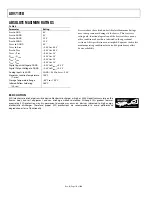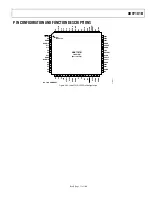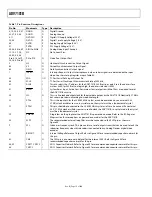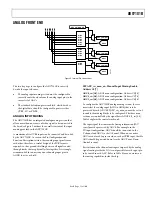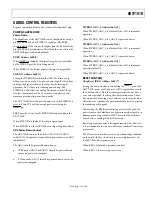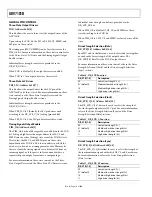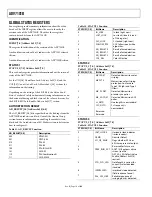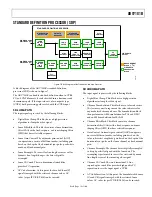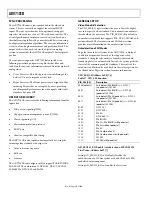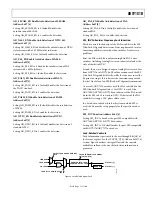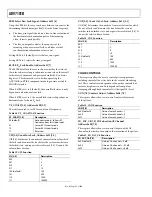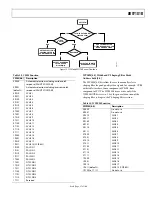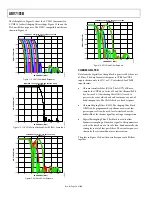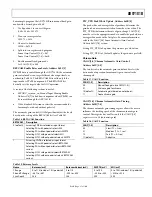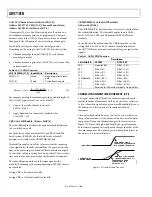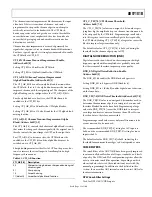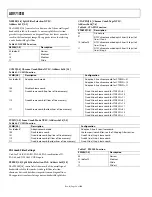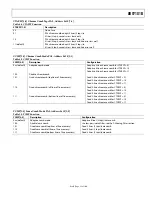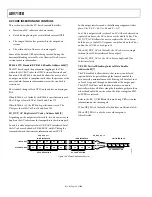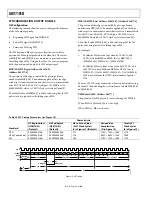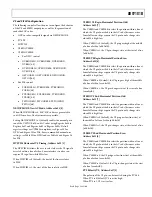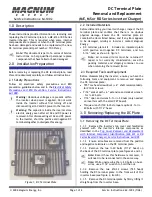
ADV7181B
Rev. B | Page 24 of 100
DEF_VAL_EN Default Value Enable, Address 0x0C[0]
This bit forces the use of the default values for Y, Cr, and Cb.
Refer to the descriptions for DEF_Y and DEF_C for additional
information. In this mode, the decoder also outputs a stable
27 MHz clock, HS, and VS.
Setting DEF_VAL_EN to 0 (default) outputs a colored screen
determined by user-programmable Y, Cr, and Cb values when
the decoder free-runs. Free-run mode is turned on and off by
the DEF_VAL_AUTO_EN bit.
Setting DEF_VAL_EN to 1 forces a colored screen output
determined by user-programmable Y, Cr, and Cb values.
This overrides picture data even if the decoder is locked.
DEF_VAL_AUTO_EN Default Value Automatic Enable,
Address 0x0C[1]
This bit enables the automatic use of the default values for Y, Cr,
and Cb when the ADV7181B cannot lock to the video signal.
Setting DEF_VAL_AUTO_EN to 0 disables free-run mode.
If the decoder is unlocked, it outputs noise.
Setting DEF_VAL_EN to 1 (default) enables free-run mode, and
a colored screen set by user-programmable Y, Cr and Cb values
is displayed when the decoder loses lock.
CLAMP OPERATION
The input video is ac-coupled into the ADV7181B through a
0.1 μF capacitor. It is recommended that the input video signal
range be 0.5 V to1.6 V (typically 1 V p-p). If the signal exceeds
this range, it cannot be processed correctly in the decoder.
Because the input signal is ac-coupled into the decoder, its dc
value needs to be restored. This process is referred to as
clamping the video. This section explains the general process of
clamping on the ADV7181B and shows the different ways in
which a user can configure its behavior.
The ADV7181B uses a combination of current sources and
a digital processing block for clamping, as shown in Figure 9.
The analog processing channel shown is replicated three times
inside the IC. While only one single channel (and only one
ADC) is needed for a CVBS signal, two independent channels
are needed for YC (S-VHS) type signals, and three independent
channels are needed to allow component signals (YPrPb) to be
processed.
The clamping can be divided into two sections
•
Clamping before the ADC (analog domain): current
sources.
•
Clamping after the ADC (digital domain): digital
processing block.
The ADCs can digitize an input signal only if it resides within
the ADC’s 1.6 V input voltage range. An input signal with a dc
level that is too large or too small is clipped at the top or bottom
of the ADC range.
The primary task of the analog clamping circuits is to ensure
that the video signal stays within the valid ADC input window
so the analog-to-digital conversion can take place. It is not
necessary to clamp the input signal with a very high accuracy in
the analog domain as long as the video signal fits the ADC range.
After digitization, the digital fine clamp block corrects for any
remaining variations in dc level. Since the dc level of an input
video signal refers directly to the brightness of the picture
transmitted, it is important to perform a fine clamp with high
accuracy; otherwise, brightness variations can occur. Further-
more, dynamic changes in the dc level almost certainly lead to
visually objectionable artifacts and must therefore be prohibited.
The clamping scheme has to complete two tasks. It must be able
to acquire a newly connected video signal with a completely
unknown dc level, and it must maintain the dc level during
normal operation.
For quickly acquiring an unknown video signal, the large current
clamps can be activated. It is assumed that the amplitude of the
video signal at this point is of a nominal value. Control of the
coarse and fine current clamp parameters is performed
automatically by the decoder.
Standard definition video signals can have excessive noise on
them. In particular, CVBS signals transmitted by terrestrial
broadcast and demodulated using a tuner usually show very
large levels of noise (>100 mV). A voltage clamp would be
unsuitable for this type of video signal. Instead, the ADV7181B
uses a set of four current sources that can cause coarse
(>0.5 mA) and fine (<0.1 mA) currents to flow into and away
from the high impedance node that carries the video signal
(see Figure 9).
COARSE CURRENT SOURCES
FINE CURRENT SOURCES
DATA
PRE-
PROCESSOR
(DPP)
ADC
SDP
WITH DIGITAL
FINE CLAMP
CLAMP CONTROL
ANALOG
VIDEO
INPUT
04984-009
Figure 9. Clamping Overview

